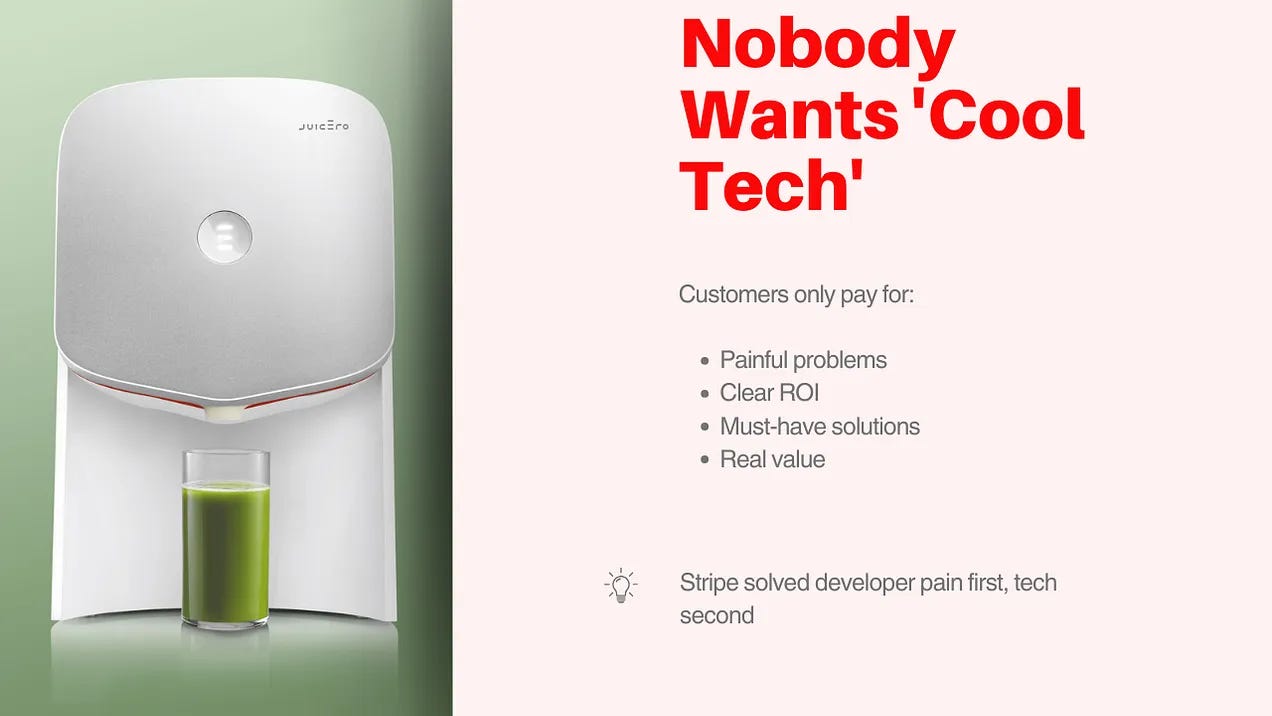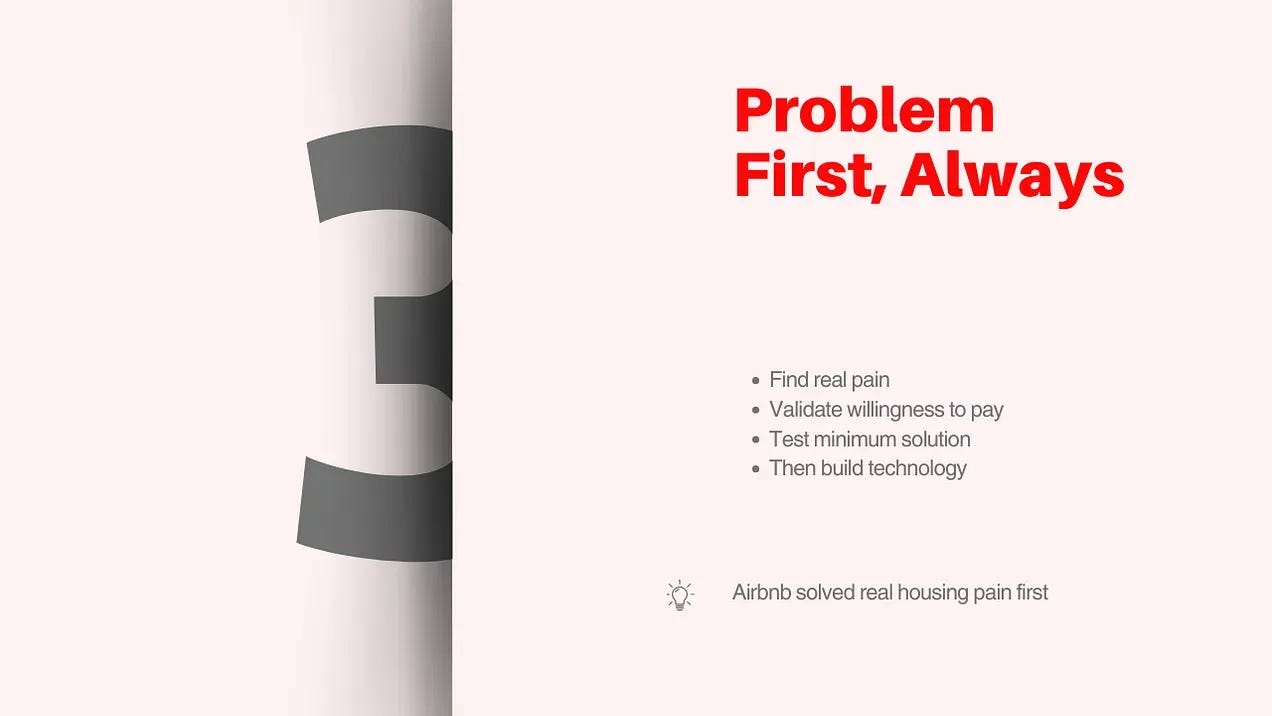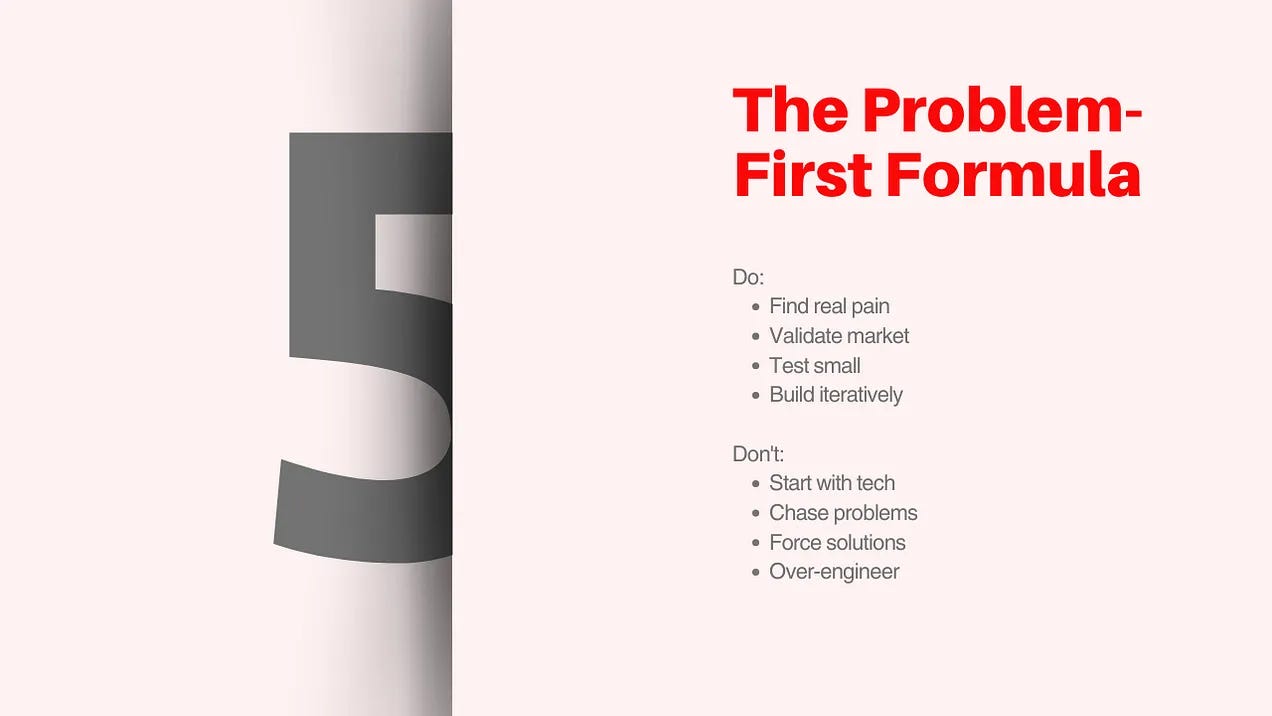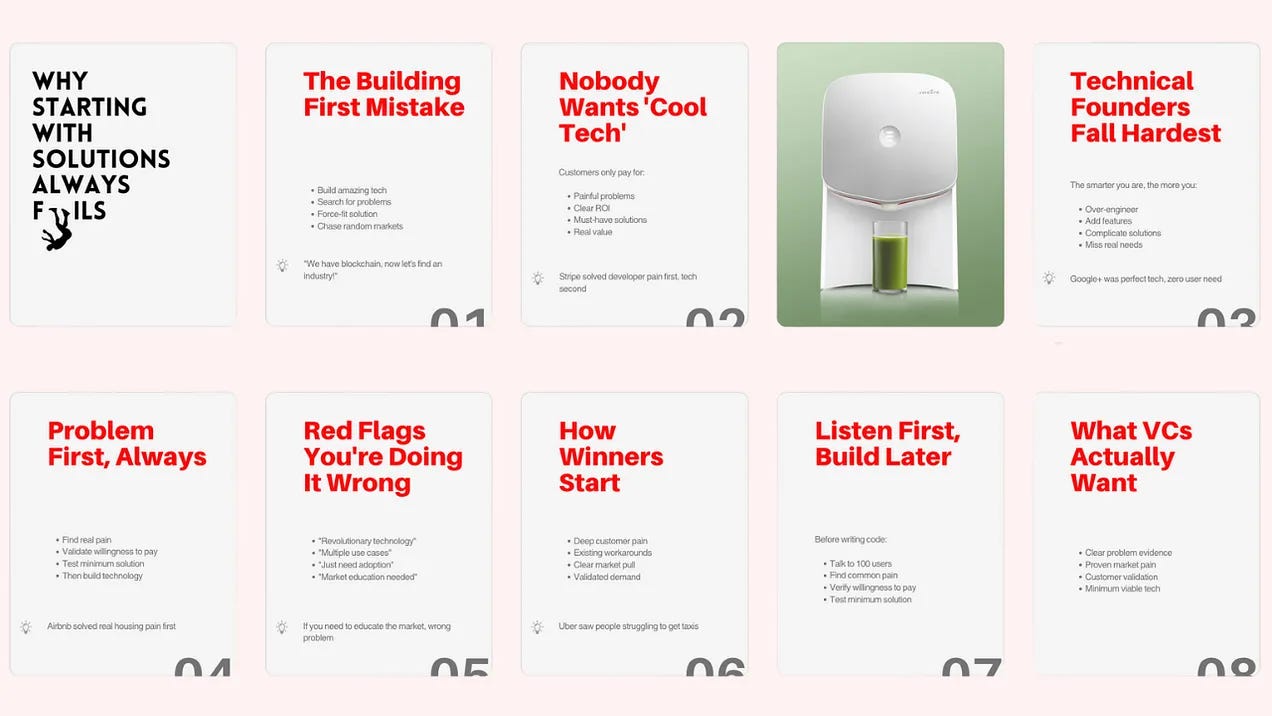Here’s how most startup failures begin:
A founder falls in love with a solution—AI, blockchain, automation, you name it—before they’ve truly understood the problem. The tech is impressive, the deck is slick… but the market? Crickets.
Sound familiar?
This is the most expensive trap in startups: building something clever, then scrambling to find someone who needs it.
Because customers don’t buy tech.
They buy solutions to their problems.
New from Harmonic: Scout — the AI agent made for VC
Scout combines Harmonic’s private data with insights from across the web, your networks, and your CRM, so you can:
Search for startups in your own words
Generate a full market map with one click
Instantly create diligence reports from a simple prompt
Synthesize insights from videos, podcasts, articles, market reports, and more
It's like sending out an army of dedicated minions to complete vital parts of your investment workflow, without the hassle of hiring, instructing, or waiting.
Try it out!
That’s why the smartest founders flip the script. They obsess over problems first. They talk to customers before they touch a line of code. And when they finally build? It lands—because it solves something real.
This article breaks down exactly why starting with solutions leads to dead ends—and how to reverse-engineer startup ideas from actual pain points.
Let’s get into it.
I'm Burak Buyukdemir—25 years in startups, from breakthroughs to flops. I founded one of Turkey’s top accelerators and now invest globally in serious founders.
I taught entrepreneurship, wrote a book (not a bestseller), and now share my insights through LinkedIn posts and blogs.
I share raw, no-BS takes on startups and investing across YouTube, LinkedIn, Spotify, and Substack. If you’re serious about building, let’s connect.

1. The Tech-First Trap: Why It Fails
“We have blockchain, now let’s find an industry!”
It’s tempting to showcase cutting-edge tech like blockchain. However, customers care about solutions that resolve painful problems, offer clear ROI, and deliver undeniable value—not just “cool tech.”
What Customers Actually Care About:
✅ Real Pain Points – Are you solving a genuine problem?
✅ Clear ROI – Can customers measure the value?
✅ Must-Have, Not Nice-to-Have – Is it a necessity or just interesting?
✅ Seamless Adoption – Will customers actually use it?
Relying solely on technology without first understanding customer needs can lead to high customer acquisition costs, poor problem-solution fit, and stagnant growth.

2. Over-Engineering: The Smart Founder’s Mistake
Stripe’s Example:
Stripe didn’t start by saying, “Let’s build the best payment infrastructure.”
They identified a frustration—developers struggling with online payments—and built a simple solution first.
What Many Founders Do Instead:
❌ Over-engineer: Build complex tech no one asked for.
❌ Feature creep: Add unnecessary bells and whistles.
❌ Overcomplicate: Make something that’s hard to adopt.
❌ Solve imaginary problems: Spend months refining a product no one wants.
Smart founders focus on solving real needs—not building the most sophisticated system from day one.

3. When Tech Doesn’t Match Market Need
The Google+ Misstep:
Google+ was technically great. But no one needed another social network. Even billion-dollar companies fail when they don’t start with the right problem.
The Right Steps to Take:
Identify Real Pain: Determine what issues your market truly experiences.
Validate Willingness to Pay: Confirm that customers are ready to invest in solving the problem.
Test a Minimum Viable Solution: Start with a simple prototype before building a complex system.
Build Iteratively: Develop your technology based on real user feedback.
If you have to educate people on why they need your product, you’re solving the wrong problem.

4. The Correct Approach: Problem First, Solution Second
Airbnb’s Success Story:
Airbnb didn’t rely on “revolutionary technology” or multiple use cases. Instead, they addressed a real housing problem with a simple, validated solution. Their success lay in solving deep customer pain and building a solution that the market already needed.
Uber’s Method:
Before writing a single line of code, Uber identified that people were struggling to find taxis. They spoke with 100 users, discovered common pain points, and validated a willingness to pay before testing a minimum viable solution. Their mantra was: Listen First, Build Later.
What Investors Actually Look For:
📌 Clear Problem – Data-backed market pain.
📌 Market Demand – Are people actively searching for a solution?
📌 Customer Validation – Do they actually pay for it?
📌 Lean MVP – A tested, no-frills version proving it works.

5. Continuous Iteration = Survival
Before investing heavily in product development, launch a simplified version to test the waters. Early customer validation helps you understand whether your proposed solution truly alleviates the problem. Consider these practices:
Early Prototyping: Build a minimum viable product (MVP) that captures your core value proposition.
User Testing: Engage with a small group of users to gather honest feedback.
Iterative Adjustments: Refine your solution based on real-world responses to ensure you’re addressing the right pain points.
This approach minimizes risk and directs resources toward features that genuinely matter.
6. Iterate Based on Customer Feedback
Building a successful product is rarely a one-and-done deal. Instead, it’s a continuous process of listening, learning, and iterating. Embrace a feedback loop where customer insights drive your next steps:
Continuous Improvement: Regularly update your product based on user experiences.
Agile Methodology: Adopt agile practices to quickly pivot or adjust your product in response to market needs.
Transparent Communication: Keep customers informed about updates and new features to build trust and foster loyalty.
Iterating based on direct feedback ensures your solution remains relevant and effective over time.

7. Building for Scale & Longevity
Once you’ve validated your product and refined it through iterations, shift your focus to scalability and sustainability. A solution that works in a small test market might need adjustments to perform well on a larger scale. Consider these key aspects:
Robust Infrastructure: Ensure your technology can handle increased demand without compromising performance.
Long-Term Vision: Plan for future market changes and potential growth areas, not just immediate needs.
Sustainable Business Model: Develop a model that supports continuous innovation, reliable revenue streams, and operational resilience.
Preparing for scalability early creates a foundation that supports long-term success while staying true to solving real customer problems.
The Bottom Line: Start with the Problem, Not the Tech
❌ Don’t build fancy tech first.
✅ Do identify and validate a real problem.
✅ Do listen to your target users before building.
✅ Do keep it simple and iterate fast.
If you have to convince people they have a problem, you’re solving the wrong one.
Your future self—and your investors—will thank you for focusing on what truly matters.
If you want to connect on LinkedIn or Substack, do yourself a favour and hit that follow button—if you're ready for the unfiltered truth, we're already friends.




